
AB-1033 Complete Guide 2025: Everything Property Owners Need to Know
Comprehensive guide to AB-1033 legislation, eligibility requirements, and the complete process for converting your ADU into a separate condominium unit.
Read ArticleProfessional AB-1033 consulting, architectural planning, engineering, permitting, and construction services. Maximize your property investment with expert guidance on California's groundbreaking ADU sales legislation.
ADUs Completed
Cities Served
Property Value Added
AB-1033 is groundbreaking California legislation that fundamentally transforms ADU ownership and sales opportunities.
Revolutionary ADU legislation
For the first time in California history, homeowners can now sell their ADUs separately from their primary residence as individual condominium units.
Learn MoreCreate unprecedented investment opportunities with professional AB-1033 conversion services.
Schedule ConsultationAssembly Bill 1033 (Ting) approved by Governor Newsom on October 11, 2023, making separate ADU sales legal throughout California.
Active LegislationTransform your ADU into a separately sellable condominium through subdivision mapping, utility separation, and HOA formation.
Expert GuidedLos Angeles, San Diego, San Jose, Berkeley, Sacramento, and growing list of California cities implementing ordinances.
Rapidly ExpandingUnderstanding the groundbreaking legislation that's transforming California's ADU market and creating unprecedented opportunities for homeowners.
Before AB-1033, California Government Code Section 65852.2 prohibited the separate sale of ADUs from primary residences. This restriction limited homeowners' ability to monetize ADU investments and constrained the affordable housing market.
AB-1033 addresses California's housing crisis by:
AB-1033 creates significant economic opportunities:
ADUs eligible for separate sale command premium valuations
Access equity without refinancing primary residence
Smaller, more affordable housing units for new homeowners
Track the progress of AB-1033 implementation across California
AB-1033 signed into law
October 11, 2023Early adopter cities begin ordinance implementation
Municipal rollout phaseBroader municipal adoption expected
Statewide expansionExplore our portfolio of stunning ADU designs that maximize space, comfort, and property value.
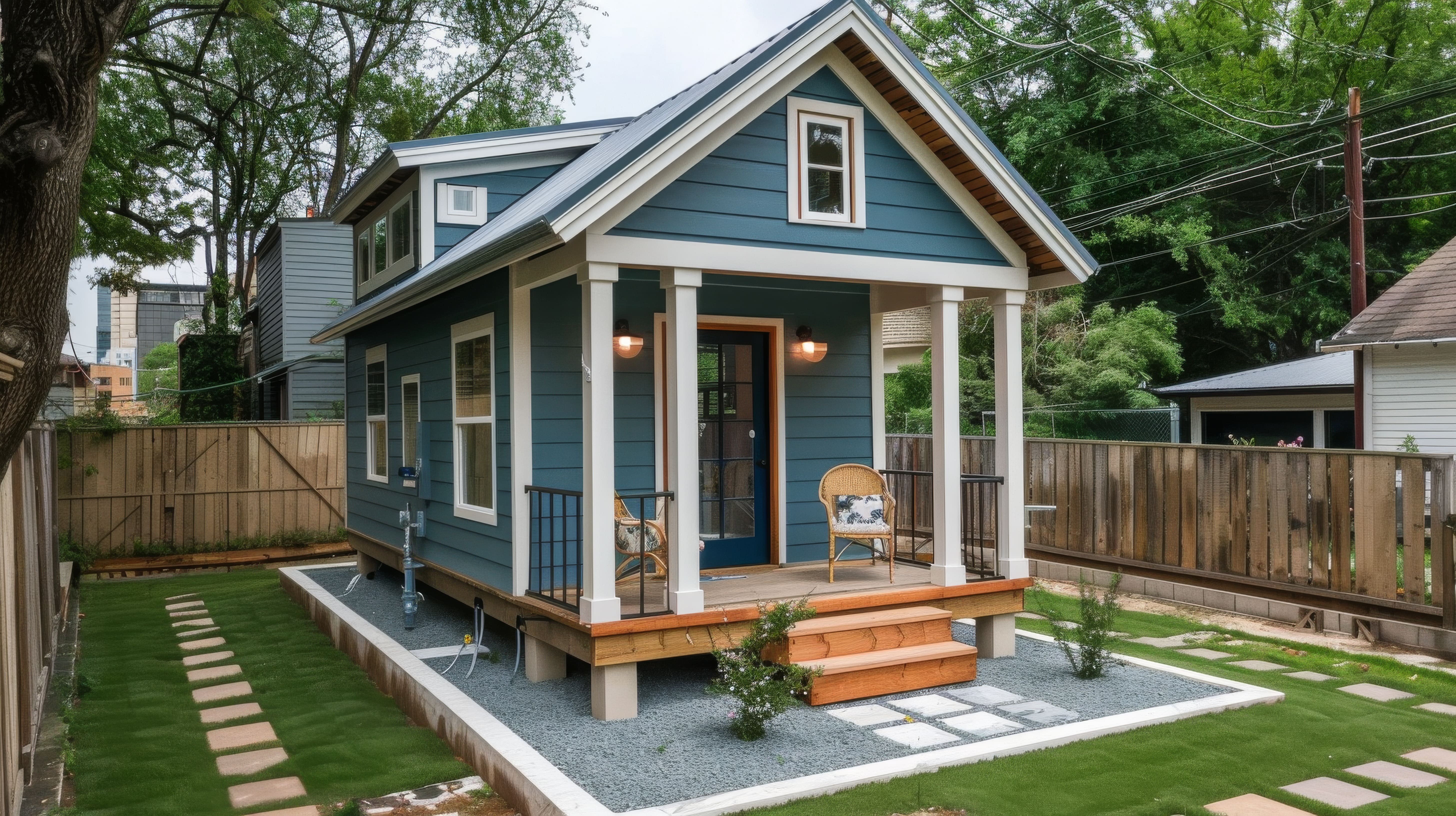
Stylish blue exterior with thoughtful landscaping
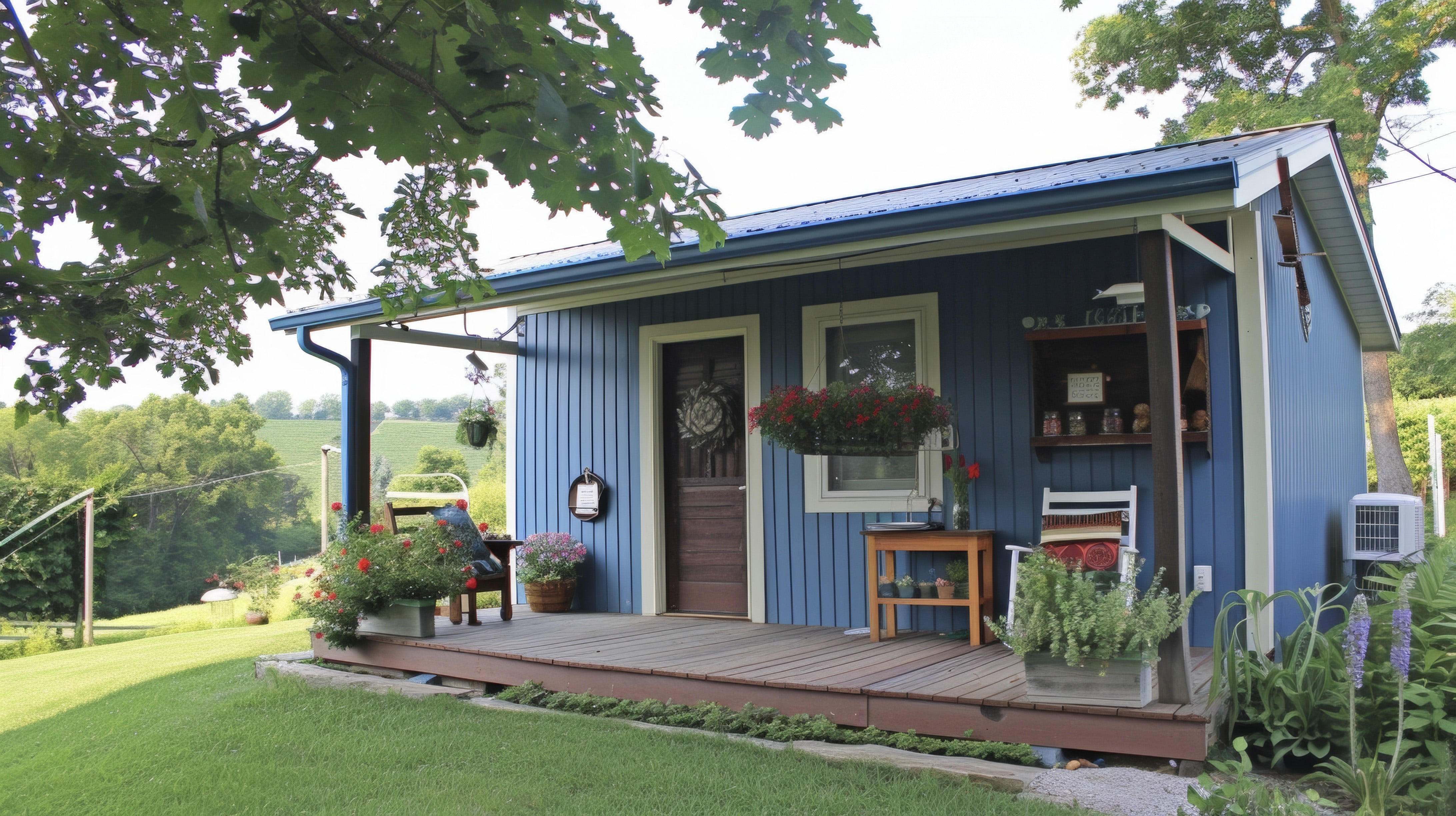
Charming design with rural appeal
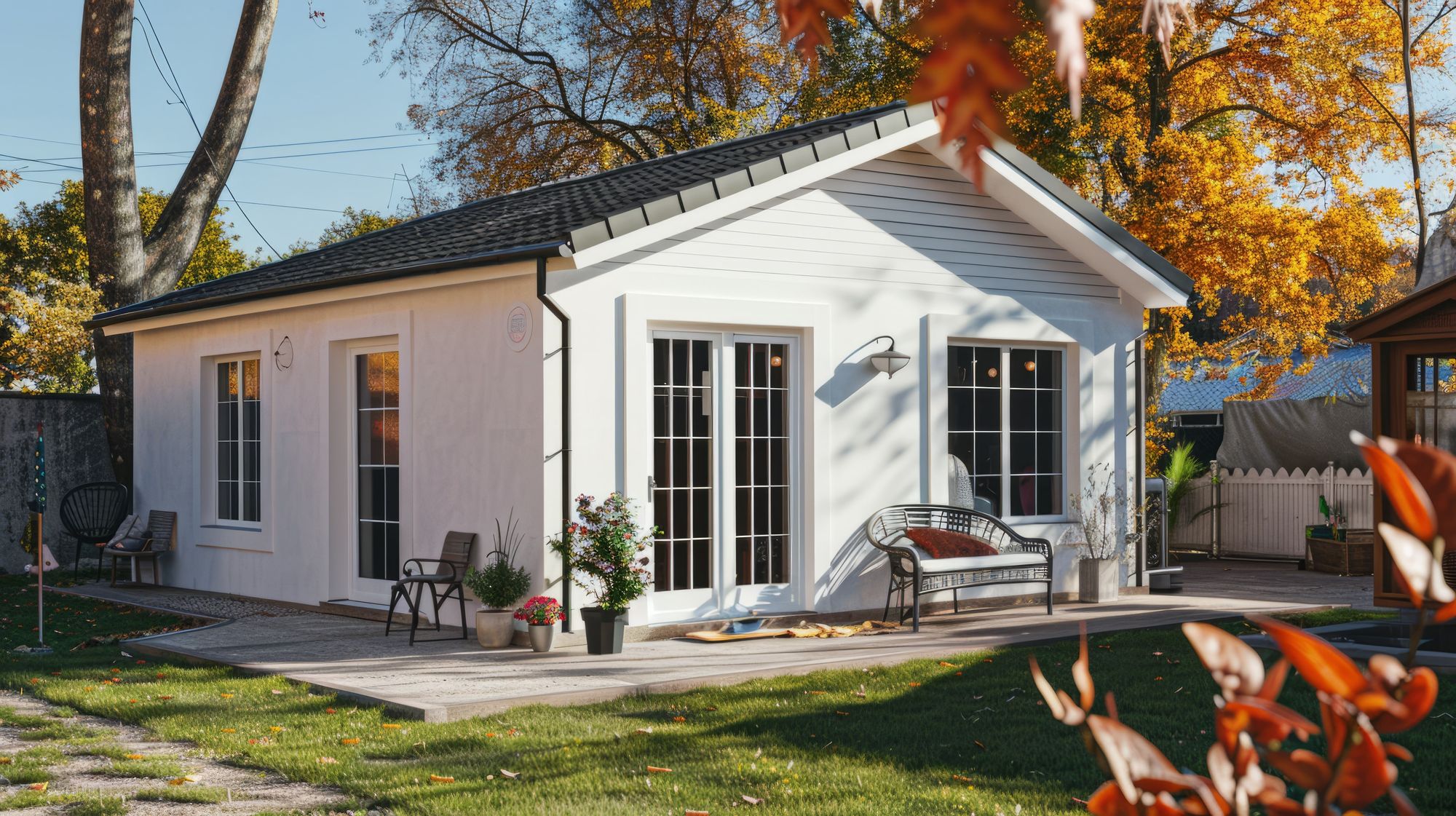
Clean lines with premium finishes
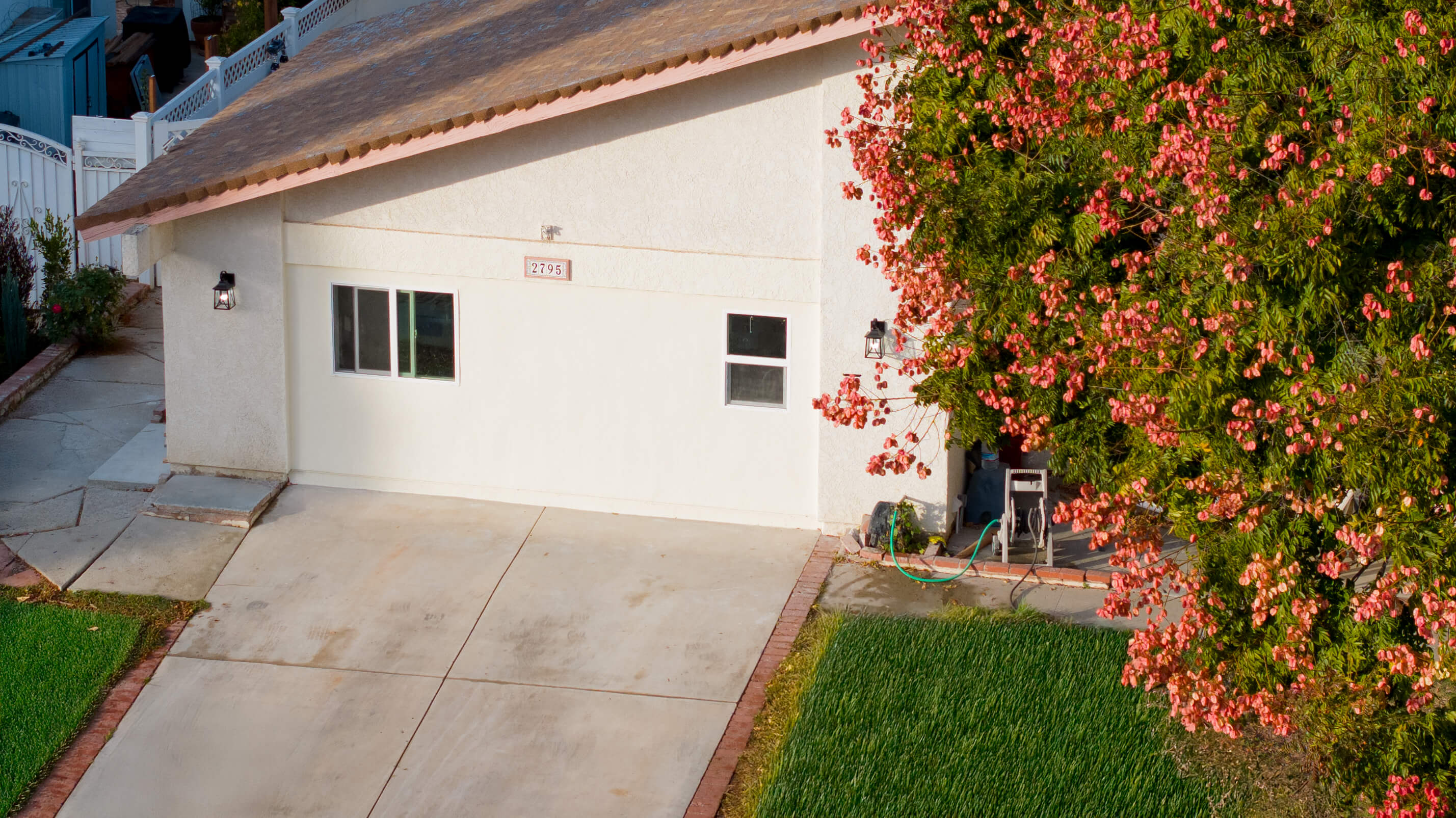
Full property transformation
Discover how AB-1033 can transform your property investment strategy and create new income opportunities.
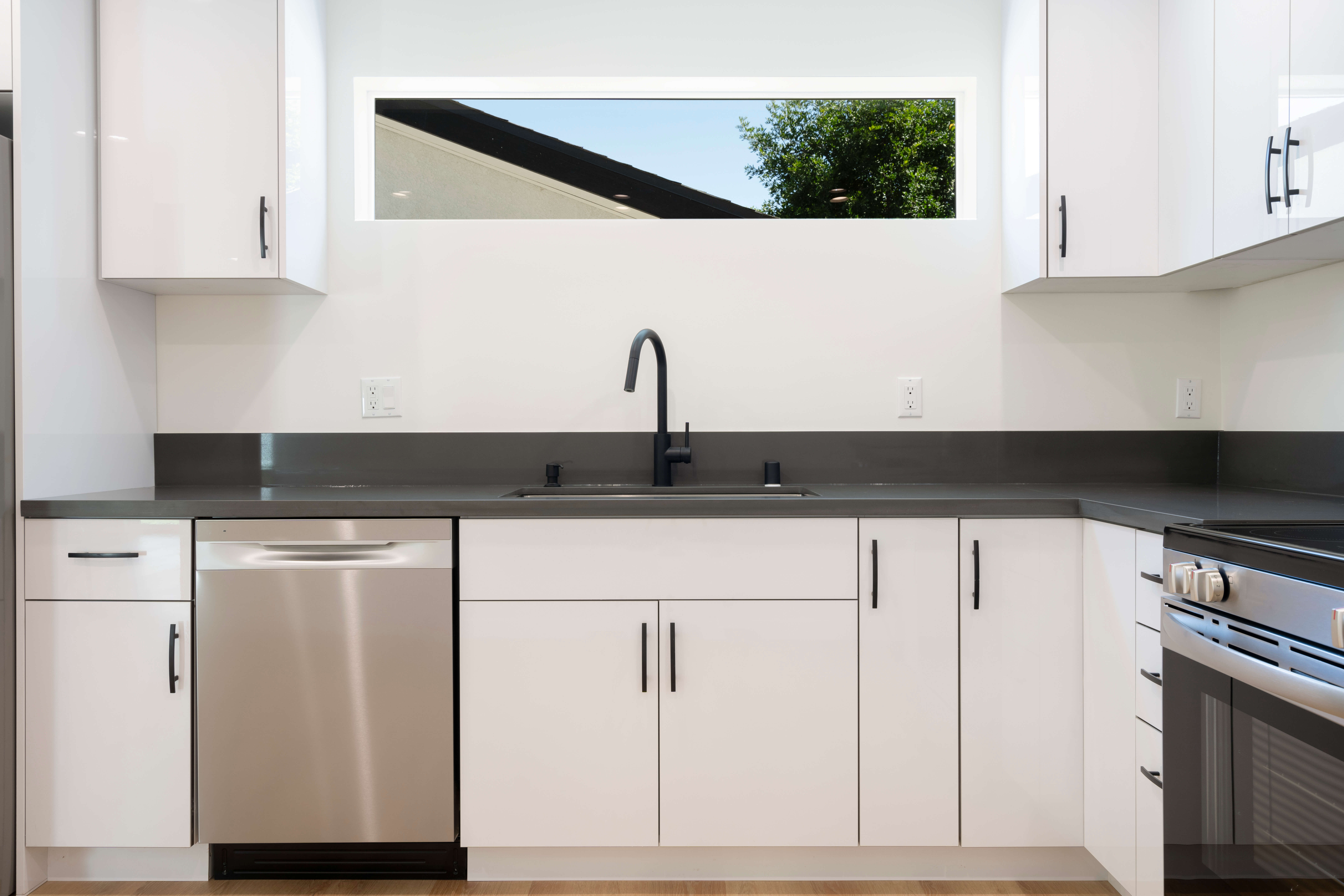
Sell your ADU separately to access equity without selling your entire property. Perfect for funding retirement, education, or new investments.
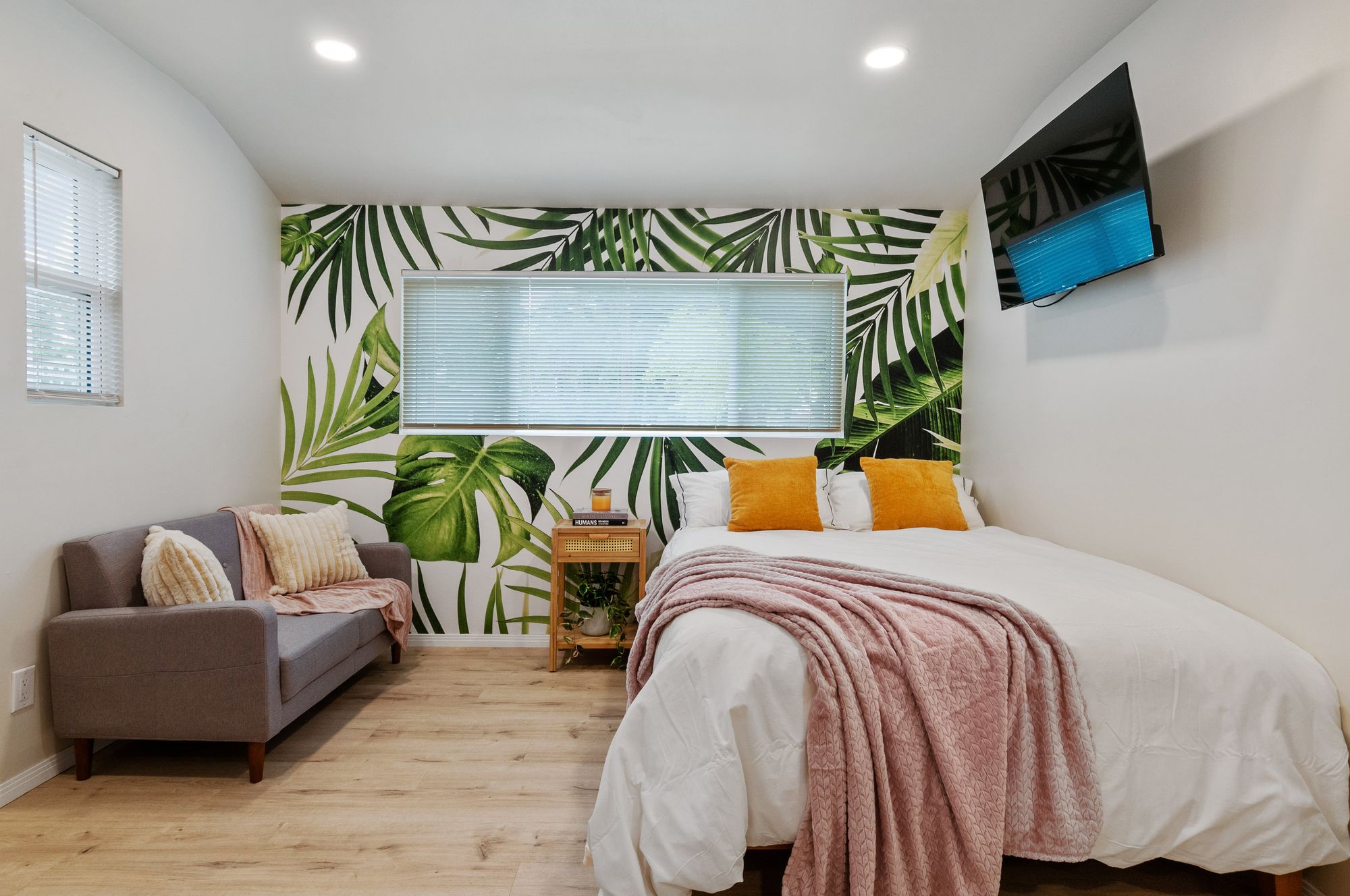
Help address California's housing crisis by creating more affordable homeownership opportunities for first-time buyers and young families.
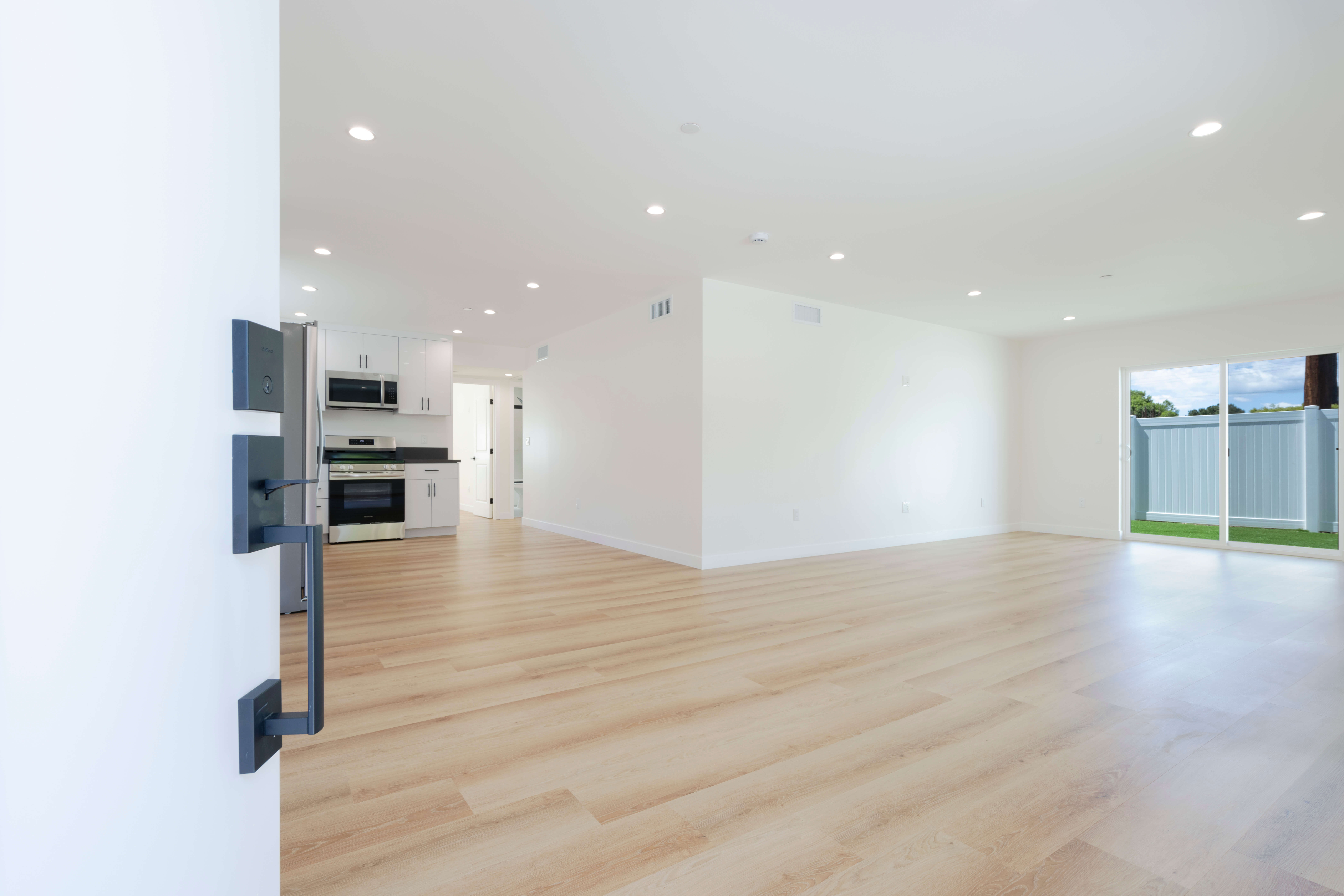
ADUs that can be sold separately typically command higher valuations, increasing your overall property investment returns.
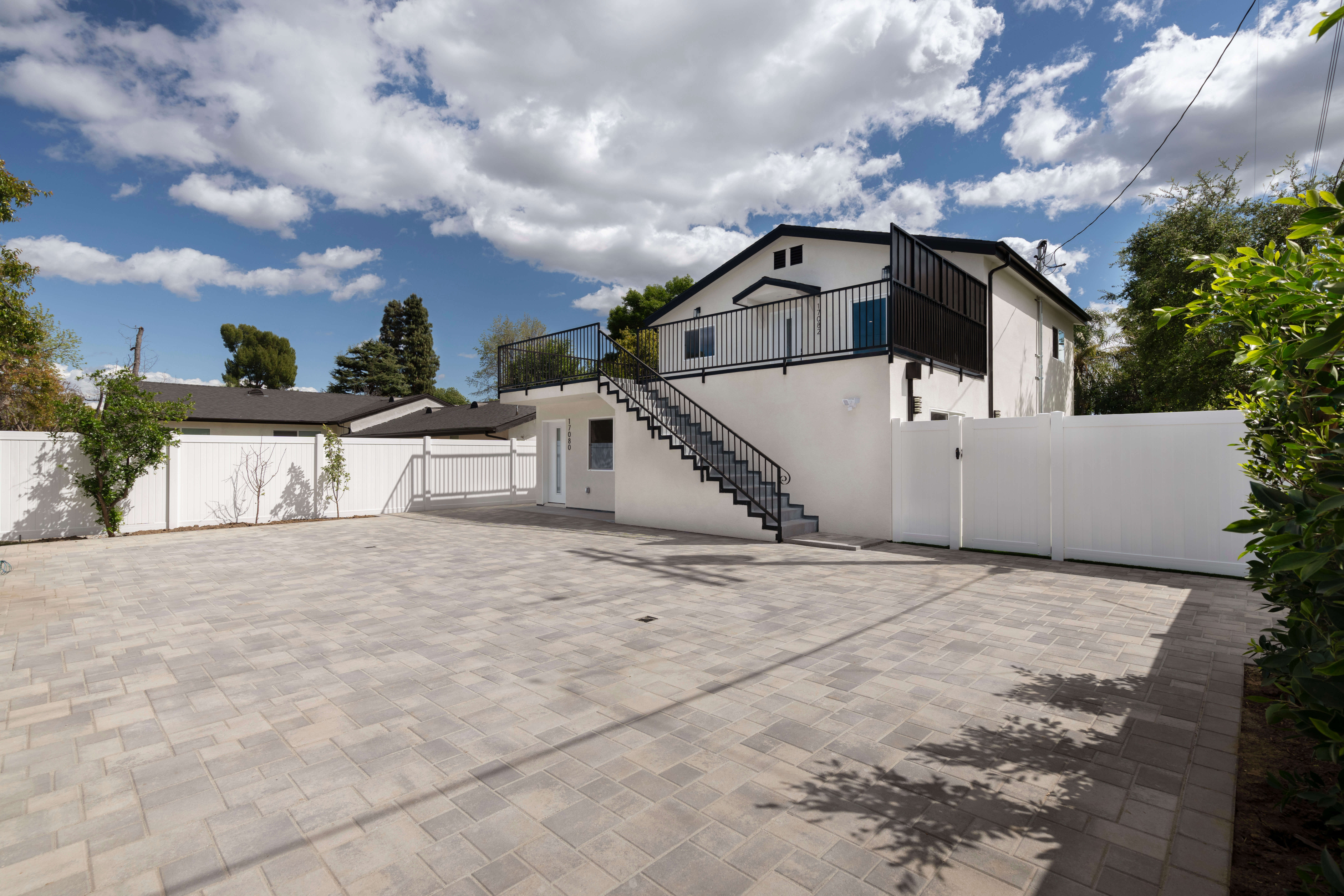
AB-1033 includes provisions for faster, ministerial approval processes, reducing bureaucratic delays and costs.
Comprehensive end-to-end services for your AB-1033 ADU project, from initial consultation to final construction.
A streamlined approach to maximize your ADU investment through AB-1033 opportunities.
Initial assessment of your property and AB-1033 opportunities, including feasibility analysis and financial projections.
Custom architectural design, engineering plans, and permit preparation tailored to your specific property and goals.
Professional construction management ensuring quality, timeline, and budget compliance throughout the build process.
Complete AB-1033 condominium conversion process, from subdivision mapping to final sale preparation.
Navigate the comprehensive legal framework for converting your ADU into a separately sellable condominium under California law.
HOA Compliance
AB-1033 condominium conversions must comply with the Davis-Stirling Common Interest Development Act (California Civil Code Section 4000+).
Code Compliance
Before condominium plan recordation, AB-1033 requires comprehensive safety inspection documentation.
Legal Documentation
Conversions must meet California Subdivision Map Act provisions for legal separation of units.
Independent Services
Independent utility services are essential for separate sale and individual ownership rights.
Our AB-1033 experts navigate the complex legal requirements to ensure your conversion meets all California standards.
California municipalities implementing AB-1033 enabling ordinances for ADU condominium conversions.
More cities are adopting AB-1033 ordinances regularly. Contact us to learn about your city's participation status.
Over 80 frequently asked questions about AB-1033 California law, ADU development, permitting, construction, and condominium conversion processes. Expert answers to help you navigate every aspect of separate ADU sales.
Comprehensive answers about AB-1033 California law, ADU development, permitting, construction, and condominium conversion processes.
Search through 80+ expert-curated FAQs for instant answers
Popular searches:
AB-1033 is California legislation that allows local agencies to adopt ordinances permitting the separate sale of primary dwelling units and accessory dwelling units (ADUs) as condominiums, providing new opportunities for homeowners to monetize their ADUs.
Currently participating cities include Los Angeles, San Diego, San Jose, Berkeley, Sacramento, and San Diego County. The list continues to expand as more cities adopt local ordinances to implement AB-1033 provisions.
AB-1033 was approved by the Governor on October 11, 2023, and filed with the Secretary of State on the same date, making it official California law.
Previously, ADUs could only be rented separately but not sold separately from the primary residence. AB-1033 now allows local agencies to permit the separate sale of ADUs as condominiums, creating new ownership opportunities.
Requirements include: 1) Condominiums must be created under the Davis-Stirling Common Interest Development Act, 2) Compliance with Subdivision Map Act requirements, 3) Safety inspection before condominium plan recordation, and 4) Local ordinance adoption by the city.
Yes, before recordation of the condominium plan, a safety inspection must be conducted, evidenced by either a certificate of occupancy from the local agency or a housing quality standards report from a HUD-certified building inspector.
It's California law (Civil Code Section 4000+) that governs common interest developments like condominiums, establishing rules for HOAs, CC&Rs, and shared ownership structures required for AB-1033 conversions.
AB-1033 condominiums must conform to all applicable objective requirements of the Subdivision Map Act (Government Code Section 66410+) and local subdivision ordinances, ensuring proper legal subdivision of the property.
Local agencies can adopt ordinances to implement AB-1033 but must follow the specific requirements outlined in the legislation. They cannot impose requirements that conflict with AB-1033's provisions.
If your city hasn't adopted a local ordinance implementing AB-1033, you cannot yet convert your ADU to a separate condominium. You'll need to advocate for or wait for your city to pass enabling legislation.
Attached ADUs cannot exceed 50% of the existing primary dwelling's floor area. Detached ADUs cannot exceed 1,200 square feet. These size limits remain the same under AB-1033.
New ADU structures require no more than 4 feet setback from side and rear lot lines. Converted existing structures or structures built in the same location as existing structures require no setback.
Yes, parking requirements cannot exceed one space per ADU or per bedroom (whichever is less). Tandem parking is allowed, and when garages are converted to ADUs, replacement parking isn't required.
ADUs are not required to have fire sprinklers if they're not required for the primary residence. Building an ADU also doesn't trigger sprinkler requirements for the existing primary dwelling.
Permitting agencies must approve or deny ADU applications within 60 days. The process is ministerial without discretionary review or hearings, streamlining approval timelines.
ADUs can be built in areas zoned for single-family or multifamily residential use, provided the lot includes a proposed or existing dwelling and meets local water/sewer service adequacy requirements.
Local agencies can impose objective architectural review standards, but these must be reasonable and cannot include minimum lot size requirements or be used to delay or deny permits.
Yes, garages can be converted to ADUs. When this happens, you're not required to replace the lost parking spaces, and demolition permits are reviewed concurrently with ADU applications.
Local agencies cannot impose owner-occupant requirements before January 1, 2025, or on ADUs permitted between January 1, 2020, and January 1, 2025. After 2025, owner-occupancy may be required but rentals must be longer than 30 days.
For separate sale, utilities (water, gas, electricity) must be set up for independent billing, requiring notification of providers and installation of separate meters and connections.
Required documents typically include site plans, floor plans, elevation drawings, structural calculations, utility plans, and compliance documentation showing adherence to building codes and zoning requirements.
Permit costs vary by jurisdiction but typically range from $5,000 to $25,000 depending on project complexity, size, and local fee structures. AB-1033 aims to reduce bureaucratic costs and streamline the process.
No, ADU permits must be processed ministerially without discretionary review. Denials must be based on objective standards with written explanation of deficiencies and remediation steps provided within 60 days.
The permitting agency must provide written comments listing defective or deficient items and describing how the application can be remedied, all within the 60-day review period.
For garage demolitions being replaced with ADUs, demolition permits are reviewed concurrently with ADU applications and issued simultaneously, streamlining the process.
Generally, no notification or placard posting is required for garage demolitions being replaced with ADUs, unless the property is in an architecturally or historically significant district.
ADUs must meet local building codes for detached dwellings, but construction doesn't constitute a Group R occupancy change unless specifically determined by the building official with substantial evidence.
Health officer approval is required only where private sewage disposal systems are being used, if mandated by local health regulations.
Existing ADU ordinances must be updated to comply with AB-1033 requirements and cannot include discretionary processes or provisions that conflict with the streamlined ministerial approval process.
Cities cannot impose standards beyond those specified in AB-1033 and related ADU legislation. Additional local requirements that conflict with or exceed state standards are invalid.
ADUs must meet the same building codes as detached dwellings, including structural, electrical, plumbing, and safety requirements, but benefit from streamlined approval processes under AB-1033.
Construction must comply with local building codes, but innovative methods meeting code requirements are generally acceptable. Prefab and modular construction are increasingly popular for ADUs.
Design flexibility is significant within objective standards for height, setbacks, and size. Architectural review must be objective and cannot unreasonably restrict design choices that meet code requirements.
ADUs must comply with applicable accessibility requirements under state and federal law, though specific requirements may vary based on the size and configuration of the unit.
ADUs require independent heating, electrical, and plumbing systems. HVAC systems must meet energy efficiency requirements, and electrical systems must have separate panels for future separate metering.
Initially yes, but for AB-1033 separate sale, utilities must be separated with independent meters and billing. Planning for future separation during construction is recommended.
ADUs must meet current Title 24 energy efficiency standards, including proper insulation, efficient windows, and energy-compliant HVAC and water heating systems.
Local agencies can impose reasonable landscape standards, but these must be objective and cannot be used to unreasonably burden or delay ADU development.
Foundation requirements depend on soil conditions and structural loads, following standard building codes for detached dwellings. Soil reports may be required for new construction.
Two-story ADUs are allowed if they comply with local height restrictions and objective design standards, providing additional square footage within the 1,200 sq ft limit for detached units.
ADU construction costs typically range from $150,000 to $400,000 depending on size, finishes, site conditions, and local labor costs. Converted spaces are generally less expensive than new construction.
Financing options include home equity loans, construction loans, cash-out refinancing, personal loans, and some specialized ADU loan programs. Many lenders now offer ADU-specific products.
Yes, ADUs typically increase property value and therefore property taxes. However, Proposition 13 protections limit annual assessment increases to 2% until the property is sold.
ROI varies but ADUs typically provide 6-12% annual returns through rental income, plus property value increases. AB-1033 separate sale options may enhance returns further.
Potential tax benefits include depreciation deductions for rental properties, deductible construction loan interest, and possible local tax incentives. Consult a tax professional for specifics.
ADU rental rates depend on location, size, and amenities, typically ranging from $1,500-$4,000+ monthly in California markets. Research comparable local rentals for pricing guidance.
Ongoing costs include utilities, maintenance, insurance, property management (if used), HOA fees (for condominiums), and potential vacancy periods between tenants.
Insurance costs typically increase to cover the additional structure and rental liability. Expect 10-25% higher premiums, varying by insurer and coverage levels.
Some local agencies and nonprofit organizations offer ADU grants or low-interest loans, particularly for affordable housing projects. Check with your city and housing authorities for available programs.
Payback periods typically range from 10-20 years through rental income, depending on construction costs, rental rates, and financing terms. AB-1033 sale options may accelerate returns.
The process involves: 1) Verify city participation, 2) Prepare condominium subdivision map, 3) Arrange separate utilities, 4) Form HOA structure, 5) Complete required inspections, 6) Record condominium plan, and 7) List for sale.
A licensed surveyor must prepare a detailed condominium plan showing separate ownership boundaries, common areas, exclusive use areas, and compliance with subdivision requirements.
Yes, condominium conversion requires establishing a homeowners association under the Davis-Stirling Act to manage common areas, shared utilities, and maintain CC&Rs governing the development.
Conversion costs typically range from $15,000-$50,000 including surveying, legal fees, inspection costs, utility separation, and recording fees, varying by project complexity and local requirements.
Yes, AB-1033 specifically allows separate sale of either the primary dwelling or the ADU while retaining ownership of the other unit, providing flexible monetization options.
Sale prices depend on location, size, condition, market conditions, and comparable sales. Converted ADUs typically sell at a discount to similar standalone properties due to shared ownership structures.
Buyers must meet standard mortgage qualification requirements. There are no specific restrictions on ADU purchasers under AB-1033, though HOA CC&Rs may impose reasonable residency requirements.
Existing tenant rights must be respected according to lease terms and local tenant protection laws. Conversion doesn't automatically terminate existing leases or rental agreements.
If your property has multiple legal ADUs and your city allows it, multiple units can potentially be converted to separate condominiums, creating multiple sellable units from one property.
Title companies may require additional documentation for condominium conversions. Ensure proper recording of all conversion documents and CC&Rs before attempting to obtain title insurance.
Property management makes sense for distant owners or those preferring hands-off investment. Costs typically run 8-12% of rental income but include tenant screening, maintenance, and rent collection.
Owners are responsible for all interior and exterior maintenance, utilities, landscaping, and compliance with housing codes. Regular maintenance prevents costly repairs and maintains rental value.
Tenant screening should include credit checks, income verification (typically 3x rent), rental history, employment verification, and background checks. Follow fair housing laws in all screening activities.
Most ADU leases are 12-month terms with month-to-month options. Include utilities, maintenance responsibilities, parking, and any HOA restrictions in lease agreements.
Short-term rental availability depends on local zoning and HOA restrictions. Many cities regulate or prohibit short-term rentals in residential areas, and AB-1033 allows cities to require 30+ day minimum rentals.
Rental properties require landlord insurance covering liability, property damage, and loss of rent. Standard homeowner's insurance typically doesn't cover rental activities adequately.
Options include landlord-paid utilities (built into rent), separate metering, or utility allocation systems. Separate metering is required for AB-1033 condominium conversions.
Landlord protections include lease enforcement, eviction rights for cause, security deposits, and lien rights. Local tenant protection laws may provide additional tenant rights affecting landlord options.
Marketing channels include online platforms (Craigslist, Zillow, Facebook Marketplace), rental apps, local newspapers, and signage. Professional photos and detailed descriptions improve response rates.
ADU vacancy rates are typically lower than traditional rentals due to competitive pricing and high demand, averaging 5-8% annually in most California markets with proper marketing and maintenance.
Cities can choose not to adopt implementing ordinances for AB-1033, but they cannot prohibit ADUs entirely. Cities that don't participate simply don't allow separate ADU sales as condominiums.
Future legislative changes could modify AB-1033 requirements, but existing permitted ADUs and completed conversions would likely be grandfathered under vested rights principles.
ADUs are generally exempt from CEQA environmental review as ministerially approved residential projects, streamlining the approval process and reducing regulatory delays.
CC&Rs recorded before ADU laws may restrict development, but state law increasingly limits HOA authority to prohibit ADUs. Recent legislation strengthens homeowner rights to build ADUs.
All federal and state fair housing laws apply to ADU rentals, prohibiting discrimination based on protected characteristics. Familiarize yourself with fair housing requirements before renting.
Rent control application varies by jurisdiction. Some cities exempt ADUs from rent control, while others include them. Check local rent stabilization ordinances for specific requirements.
Standard real estate disclosures apply, plus condominium-specific disclosures including HOA documents, CC&Rs, financial statements, and any special assessments or litigation.
Yes, permit denials can typically be appealed through local administrative processes, planning commissions, or city councils. State law may also provide additional appeal rights for ADU denials.
Unpermitted ADUs face code enforcement, fines, and potential orders to remove or legalize the structure. Legalization requires bringing the ADU up to current code standards retroactively.
Non-compliance with building codes or permit requirements can result in fines, stop-work orders, or requirements to demolish unpermitted work. Always obtain proper permits before construction.
Get expert AB-1033 guidance and professional ADU services. Our team provides comprehensive consulting, architectural planning, engineering, permitting, construction, and conversion services throughout California.
Discover the unprecedented financial opportunities created by California's AB-1033 legislation for property investors.
Average ROI
Over 3-5 yearsPremium Valuation
Over traditional ADUsTypical Sale Price
Separate ADU salesYear Payback
Investment timelineSell ADU without selling primary residence
15-25% higher valuations than traditional ADUs
Multiple real estate assets from single property
Independent timing from main house market
Short-term financing for ADU development
Home equity lines of credit
Leverage existing home equity
Investment partnerships and alternative financing
Understanding the revolutionary changes that AB-1033 brings to ADU ownership and investment opportunities.
Limited ownership options
Cannot be sold separately from main house - tied to primary residence
Limited to rental income only - no sale opportunity
Limited to property-wide financing options
Combined assessment with main house
Adds value to overall property only
Revolutionary opportunities
Can be sold as separate condominium unit - independent ownership
Rental income OR separate sale - maximum flexibility
Individual unit financing available for buyers
Separate assessment possible - individual tax benefits
Commands premium as separately sellable asset (15-25% higher)
Transform your traditional ADU into a separately sellable asset with our expert AB-1033 conversion services.
Complete end-to-end solutions from consultation to condominium conversion, powered by GatherADU's expertise
Expert guidance through AB-1033 requirements, city regulations, and conversion feasibility analysis.
Professional architectural design and space planning optimized for AB-1033 conversion requirements.
Structural engineering analysis and complete permitting services for seamless project approval.
Licensed construction services with specialized expertise in ADU conversions and renovations.
Complete condominium conversion process including legal documentation and HOA formation.
End-to-end project coordination ensuring timely completion and quality results.
Contact our expert team for a consultation and personalized quote
Serving Los Angeles, San Diego, San Jose, Berkeley, Sacramento, and all participating AB-1033 cities throughout California
Professional AB-1033 ADU conversion services available in 400+ incorporated cities throughout California. Local expertise with deep knowledge of municipal requirements and zoning regulations.
Los Angeles County
San Diego County
Santa Clara County
Sacramento County
Alameda County
San Francisco County
Alameda County
Fresno County
California Cities Served
Currently Participating Cities
Counties Covered
Can't find your city? Contact us for availability and timeline information.
Stay informed with our comprehensive guides, market analysis, and expert insights on AB-1033 ADU conversions and California housing laws.

Comprehensive guide to AB-1033 legislation, eligibility requirements, and the complete process for converting your ADU into a separate condominium unit.
Read Article
Comprehensive guide to ADU conversions in Los Angeles under AB-1033, including local requirements, permitting process, and cost considerations.
Read Article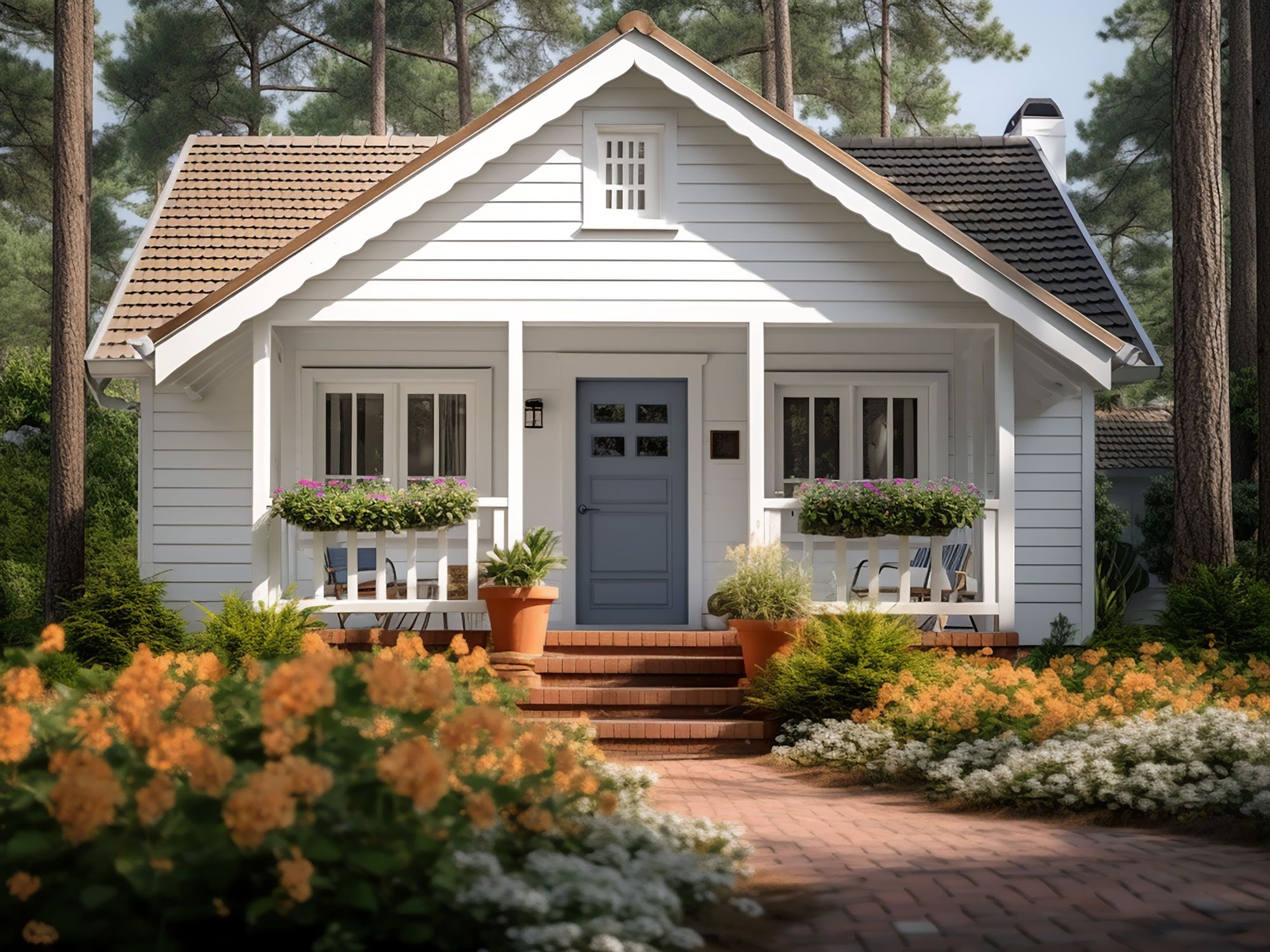
Everything you need to know about converting your San Diego ADU under AB-1033, including local requirements, coastal considerations, and market opportunities.
Read Article
Comprehensive breakdown of ADU construction costs in California for 2025, including material costs, labor rates, and cost-saving strategies.
Read Article
Comprehensive guide to ADU financing options in California, including loans, grants, incentives, and creative funding strategies for your accessory dwelling unit project.
Read Article
Complete guide to AB-1033 ADU conversions in Berkeley, including local requirements, university market opportunities, and conversion strategies.
Read ArticleReady to transform your ADU into a separate property? Contact our AB-1033 experts for a free consultation.